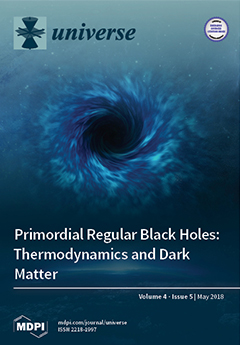We present a systematic review of thermodynamics of horizons in regular spherically symmetric spacetimes of the Kerr-Schild class,
, both asymptotically flat and with a positive background cosmological constant
. Regular solutions of this class have obligatory de Sitter center. A source term in the Einstein equations satisfies
and represents an anisotropic vacuum dark fluid (
), defined by the algebraic structure of its stress-energy tensor, which describes a time-evolving and spatially inhomogeneous, distributed or clustering, vacuum dark energy intrinsically related to space-time symmetry. In the case of two vacuum scales it connects smoothly two de Sitter vacua,
as
,
as
with
. In the range of the mass parameter
it describes a regular cosmological black hole directly related to a vacuum dark energy. Space-time has at most three horizons: a cosmological horizon
, a black hole horizon
, and an internal horizon
, which is the cosmological horizon for an observer in the internal R-region asymptotically de Sitter as
. Asymptotically flat regular black holes (
) can have at most two horizons,
and
. We present the basic generic features of thermodynamics of horizons revealed with using the Padmanabhan approach relevant for a multi-horizon space-time with a non-zero pressure. Quantum evaporation of a regular black hole involves a phase transition in which the specific heat capacity is broken and changes sign while a temperature achieves its maximal value, and leaves behind the thermodynamically stable double-horizon (
) remnant with zero temperature and positive specific heat. The mass of objects with the de Sitter center is generically related to vacuum dark energy and to breaking of space-time symmetry. In the cosmological context space-time symmetry provides a mechanism for relaxing cosmological constant to a certain non-zero value. We discuss also observational applications of the presented results.
Full article





